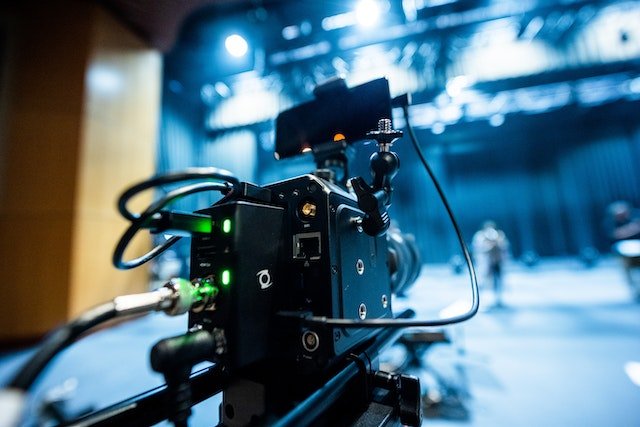The realm of celebrity journalism, particularly dominated by the paparazzi, frequently blurs the border between public interest and personal privacy. As celebrities in India become more vulnerable to intrusive media practices, the tension between media freedom and privacy grows. With the emergence of social media and a thriving paparazzi business, the dilemma of maintaining privacy while satisfying the public’s voracious curiosity has grown increasingly difficult.
The Paparazzi Phenomenon
Aggressive photographers and journalists, aka Paparazzi play an important role in capturing captivating photos of celebrities. This fad, which began with the Italian film La Dolce Vita, has spread globally. In India, the increase of paparazzi following Bollywood stars, cricketers, and politicians reflects a larger change in which privacy boundaries are being questioned.
The emergence of social media has exacerbated this impact, allowing paparazzi to share their content broadly.
Recent events in India highlight the challenges celebrities face with paparazzi intrusion. For instance, Bollywood actress Alia Bhatt criticized paparazzi for photographing her from a nearby building while she was on her balcony. Actress Shilpa Shetty won a lawsuit against a newspaper for publishing her unauthorized photos, with the court recognizing the privacy breach. Celebrities like Anushka Sharma and Kareena Kapoor Khan have also expressed concerns about the impact of intrusive media on their personal lives and mental health.
In India, the legal framework addressing paparazzi activities and privacy rights is evolving. One significant development is the Bharatiya Nyaya Sanhita, 2023, specifically Section 78(2) , which provides for punishment if privacy is breached by unauthorized surveillance or recording. This legislation marks a step forward in reinforcing privacy protections, offering legal recourse for those affected by intrusive paparazzi activities.
Additionally, the Press Council of India has issued guidelines emphasizing the need for media sensitivity and respect for individuals’ privacy, though these are more ethical benchmarks than legally binding mandates. The lacuna lies in the justification provided by paparazzies who cite Article 19(1)(a) (freedom of speech and expression) and 19(1)(g) (freedom to practice any profession) as a defense for their invasive practices.
The Indian Constitution does not explicitly mention the right to privacy but have recognized the right to privacy as a fundamental right under Article 21 of the Indian Constitution, privacy rights have been upheld by landmark Supreme Court cases such as K.S. Puttuswamy v. Union of India, Kharak Singh vs. State of Uttar Pradesh and R. Rajagopal vs. State of Tamil Nadu. These cases affirm the right to be left alone and to exercise control over one’s own personal information. Despite these protections, applying these principles to paparazzi practices remains complex and requires more explicit legal definitions.
In the US, video recording in public spaces is usually legal without consent due to lower privacy expectations. However, audio recording laws vary by state. In one-party consent states like New York and Texas, recording is allowed if at least one party, including the recorder, consents. In two-party or all-party consent states, such as California and Illinois, all parties involved must agree to the recording.
In terms of visual media, photographing individuals in public spaces is generally allowed, given the reduced expectation of privacy. However, high-profile cases like Britney Spears’ 2007 public breakdown, where relentless paparazzi followed her during a mental health crisis, have sparked debates about the ethics of such practices and prompted calls for stricter regulations.
The Role Of Publicity & Privacy Rights
The rise of social media and the paparazzi industry has exacerbated the conflict between publicity and privacy. This situation is compounded by the copyright issues surrounding paparazzi images, which can influence how a celebrity is portrayed to the public. Interestingly even internationally, the case of Galella vs. Onassis illustrates that disclosing the daily habits of celebrities is not essential for “public well-being” and constitutes a violation of privacy.
The Need For A Specific Legislation
Despite existing protections, India’s legal framework lacks specific laws tailored to paparazzi practices. To address this gap, the following measures could be considered:
1. Enacting Specific Laws: India needs legislation explicitly addressing paparazzi activities, similar to the UK’s Independent Press Standards Organization. Such organizations should define acceptable practices, prohibit invasive methods, and establish clear penalties for violations.
2. Adopting Ethical Codes: Implementing a code of ethics for paparazzi could provide guidelines on acceptable behavior, such as media interests with privacy rights.
3. Strengthening Data Protection Laws: The Personal Data Protection Bill should incorporate provisions addressing broader privacy concerns related to media intrusion. Comprehensive legislation is needed to protect individuals from invasive practices and ensure their rights are upheld.
Conclusion
The clash between paparazzi practices and privacy rights in India highlights global media intrusion concerns. Though India has improved privacy protections, gaps persist. Adopting international standards, specific laws, ethical codes, and stronger data protections can help balance media freedom with individual privacy. Collaboration among lawmakers, media, and the public is essential to create clear guidelines and legal safeguards, ensuring paparazzi respect privacy while fulfilling their roles.
Authors: Khushboo Pareek, Vishal Menon & Shafaq Rashid

